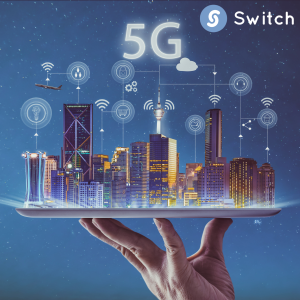
The Evolution and Impact of 5G Technology: Unleashing a New Era of Connectivity
In recent years, the telecommunications industry has witnessed a revolutionary advancement in wireless technology with the advent of 5G. This fifth-generation mobile network promises lightning-fast speeds, ultra-low latency, and increased capacity, ushering in a new era of connectivity and transforming numerous industries. This article delves into the development, characteristics, and possible consequences of 5G technology, supported by credible sources and analysis.
The Evolution of 5G Technology:
The journey towards 5G began with the International Telecommunication Union (ITU) setting the groundwork in 2015, outlining the requirements and vision for the next-generation network. Since introducing 5G technology, telecommunication companies and equipment manufacturers have diligently worked to create and implement 5G infrastructure globally.
Key Features of 5G Technology:
Enhanced Speed and Capacity: 5G technology offers significantly faster data transfer speeds than its predecessor, 4G. With download speeds potentially reaching up to 10 Gbps, users can experience quicker file transfers, seamless streaming of high-definition content, and enhanced real-time communication.
Ultra-Low Latency: 5G significantly reduces latency, the delay between sending and receiving data. With latency as low as one millisecond, 5G enables near-instantaneous responsiveness, making it ideal for applications that demand real-time interactions, such as autonomous vehicles, remote surgery, and augmented reality.
Massive IoT Connectivity: 5G networks are designed to support massive machine-to-machine communication, connecting billions of IoT devices. This connectivity will drive advancements in smart cities, industrial automation, agriculture, healthcare, and other sectors that rely on extensive device connectivity and data exchange.
Impact on Industries:
Healthcare: The healthcare industry stands to benefit immensely from 5G. With its low latency and high reliability, 5G enables remote patient monitoring, telemedicine services, and real-time transmission of critical medical data, enhancing access to healthcare in remote areas and improving patient outcomes.
Autonomous Vehicles: 5G is crucial in developing and deploying autonomous vehicles. Low latency and high bandwidth enable faster communication between vehicles, infrastructure, and other connected devices, ensuring safer and more efficient transportation systems.
Smart Cities: 5G acts as a catalyst for building smarter cities. It enables connected infrastructure, intelligent transportation systems, efficient energy management, and real-time data analysis, leading to improved resource allocation, reduced congestion, and enhanced quality of life for residents.
Analytics and Market Projections:
Market research suggests that the 5G market is expected to proliferate worldwide. Statista estimates that 5G connections worldwide will reach 3.8 billion by 2025, accounting for approximately 45% of all mobile links. A surge in consumer demand fuels a significant increase in growth, more businesses embracing technology, and government efforts to promote digital transformation.
5G technology represents a significant leap forward in the telecommunications industry, bringing unprecedented speed, capacity, and connectivity. As the deployment of 5G networks continues globally, its impact will be felt across various sectors, driving innovation, enhancing efficiency, and enabling new possibilities. As we embrace the era of 5G, we can anticipate transformative changes that will shape how we live, work, and connect with the world around us.

